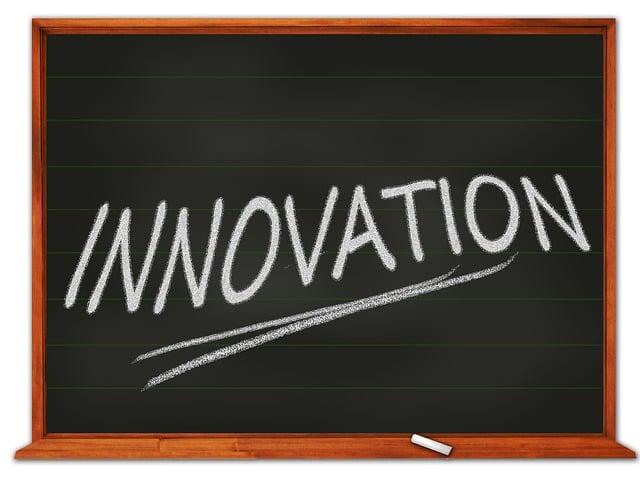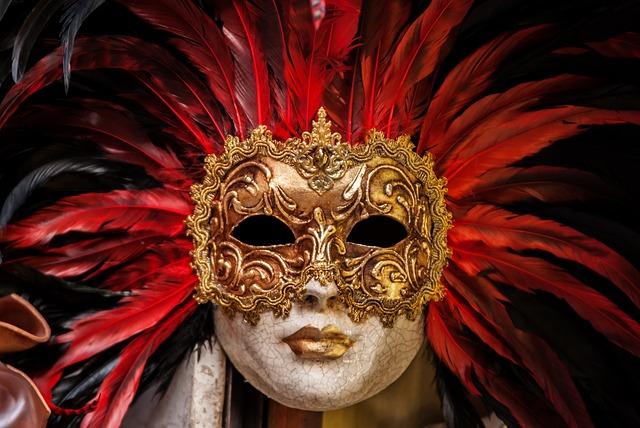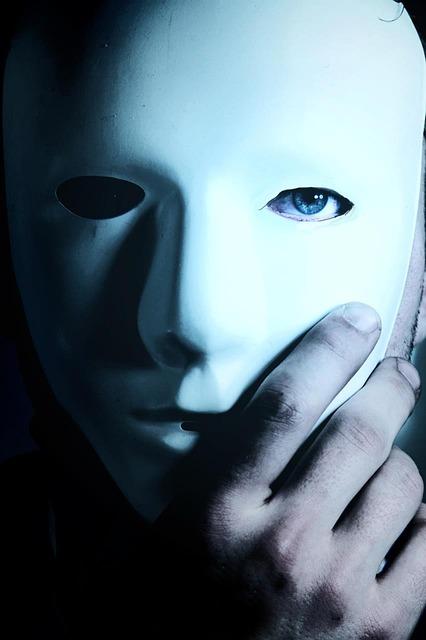Step into the realm of video editing mastery with the unveiling of Davinci Resolve 18, where cutting-edge technology meets artistic ingenuity. In this article, we delve into the captivating world of Innovative Magic Mask Techniques, a game-changer in the editing landscape. Unleash your creativity as we explore the dynamic features and endless possibilities that Davinci Resolve 18 has to offer. Whether you’re a seasoned editor or a passionate newcomer, prepare to be amazed by the power and precision of these groundbreaking techniques. Join us on this transformative journey as we unlock the secrets to elevating your editing skills to new heights.
Innovative Magic Mask Techniques Unleashed: Exploring the Basics and Beyond
Davinci Resolve 18 introduces a world of possibilities with its innovative magic mask techniques. The basics of magic mask are incredibly straightforward – simply head over to the color page, click on the magic mask icon, and choose between object mask and person mask options. Object mask is the go-to for many users as it works seamlessly for both objects and individuals. Drawing over the subject or object you want to mask doesn’t have to be precise, and enabling the red mask overlay can help you visualize the mask better. If Resolve misses any areas, you can easily add strokes to refine the mask. Additionally, utilizing the dropper with the minus symbol allows you to exclude specific areas from the mask, providing you with more control over your selection.
Fine-tuning the mask is a breeze with the range of sliders and settings available to soften the mask or include/exclude whites or blacks. Once you’ve perfected your mask, hit track to let Resolve do the tracking work for you. Tracking can be done in both forward and backward directions, ensuring a seamless result. Moreover, you can track multiple objects without any hassle. The magic mask technique allows for various creative applications, such as placing text behind an object or a person in just a few simple steps. By duplicating your clip, creating a mask, and adding an alpha output, you can easily remove the background and place text or objects creatively within your composition. Whether it’s color grading, applying effects, or combining magic mask with other features like relight, Davinci Resolve 18’s magic mask techniques offer endless possibilities for enhancing your video projects with efficiency and precision.
Mastering Magic Mask in DaVinci Resolve: Practical Tips and Tricks
Mastering Magic Mask in DaVinci Resolve is like unlocking a secret tool chest filled with incredible possibilities. The tutorial delves into the intricacies of utilizing the Magic Mask feature in DaVinci Resolve Studio, showcasing its practical applications and creative potential. The process of using Magic Mask is simplified to its core, ensuring that even beginners can grasp its functionality effortlessly. The ability to seamlessly draw over the subject or object to be masked, with the option to switch between object mask and person mask, showcases the versatility of this feature. By incorporating strokes, adjustments, and utilizing the invert mask function, users can refine their masks to perfection, ensuring a seamless integration into their projects.
Moving beyond the basics, the tutorial explores five innovative ways to leverage Magic Mask within DaVinci Resolve with finesse and creativity. From the classic use case of placing text behind an object or person to more advanced techniques like incorporating objects in the background and utilizing Magic Mask for color grading, the possibilities are endless. The tutorial also delves into combining Magic Mask with the relight effect, demonstrating how users can manipulate lighting in the background without affecting the subject. By mastering Magic Mask in DaVinci Resolve, creators can elevate their editing skills and efficiency, ultimately saving time and unlocking a world of creative opportunities within their projects.
Creative Applications of Magic Mask: Five Inspiring Use Cases
Magic Mask in DaVinci Resolve 18 is a powerful tool that offers endless creative possibilities. The basics are straightforward – simply select between object mask and person mask, draw over the subject or object you want to mask, and fine-tune the mask using various settings like softening or adjusting whites and blacks. Tracking your mask is easy with Resolve doing the heavy lifting, and you can refine it further by adding or removing strokes where needed. Magic Mask shines in various scenarios, from putting text behind an object or person to enhancing color grading without the need for traditional power windows. By utilizing Magic Mask in innovative ways, you can elevate your projects effortlessly.
One inspiring use case of Magic Mask is creating dynamic text or objects behind subjects by duplicating clips, creating masks, and utilizing alpha outputs to remove backgrounds seamlessly. Additionally, Magic Mask can be leveraged for advanced techniques like incorporating 3D objects or videos using the camera tracker in the fusion page. Not only does Magic Mask streamline color grading processes, but it also complements other features like relight effects by selectively applying adjustments to specific areas of the scene. By understanding the versatility of Magic Mask and its integration with other tools, you can unlock a world of creative possibilities and enhance your editing workflow significantly.
Enhancing Visual Effects with Magic Mask: Combining Techniques for Stunning Results
Magic Mask in DaVinci Resolve 18 offers a plethora of creative possibilities for enhancing visual effects seamlessly. When utilizing Magic Mask, there are two main options available – object mask and person mask. While object mask is versatile for both objects and individuals, the person mask is tailored specifically for human subjects. The process of creating a mask is straightforward; you simply draw over the subject or object you wish to mask without the need for extreme precision. Additionally, the red mask overlay feature aids in visualizing the mask for easier adjustments. In case of missed areas, strokes can be added to refine the mask, ensuring a precise selection.
To further refine the mask, various sliders and settings can be utilized to fine-tune the mask’s details, such as softening edges or adjusting the inclusion/exclusion of whites or blacks. One key feature of Magic Mask is the ability to track objects forward and backward from a reference frame, ensuring seamless continuity. Moreover, Magic Mask extends beyond the basic masking functionalities and can be creatively used for a myriad of scenarios. For instance, it can be employed to seamlessly integrate text behind an object or person, create complex composites, aid in color grading by precisely isolating areas for adjustment, apply various effects to masked objects, and even combine with other features like relight to control lighting effects selectively. By exploring the innovative techniques and diverse applications of Magic Mask, users can elevate their visual storytelling with DaVinci Resolve 18 to new heights.
Q&A
Q&A:
Q: What are the two options available when using Magic Mask in Davinci Resolve 18, and how are they used?
A: When using Magic Mask in Davinci Resolve 18, you have the option to choose between Object Mask and Person Mask. Object Mask is typically used for both objects and people, as it tends to work effectively for a variety of scenarios. However, if you’re not getting the desired results with Object Mask, you can switch to Person Mask and see if that yields better outcomes.
Q: Can you explain the process of creating a mask using Magic Mask in Davinci Resolve 18?
A: To create a mask using Magic Mask in Davinci Resolve 18, you simply need to draw over the subject or object you want to mask. It doesn’t have to be overly accurate, and you can enable the red mask overlay to visualize the mask better. If there are areas that need adjustments, you can add strokes to refine the mask. Additionally, you can use the dropper tool with the minus symbol to indicate areas that should not be included in the mask.
Q: How can Magic Mask be used for color grading in Davinci Resolve 18?
A: Magic Mask can be utilized for color grading in Davinci Resolve 18 by creating a mask and then adjusting the color controls for the masked object. It doesn’t replace normal power windows but offers a different approach to color grading. You can experiment with various effects on the masked object, such as adding mosaic blur or applying color enhancements to achieve the desired look.
Q: What is a creative way to use Magic Mask in Davinci Resolve 18 other than text manipulation?
A: Apart from manipulating text behind an object or person, a creative way to use Magic Mask in Davinci Resolve 18 is to combine it with the relight effect. By creating a mask of the subject with Magic Mask and feeding that mask into the relight node, you can exclude the subject from the lighting adjustments made by the relight effect. This technique allows for more precise control over lighting elements in a scene without affecting the subject.
Q: How does Davinci Resolve 18 simplify the tracking process when using Magic Mask?
A: Davinci Resolve 18 streamlines the tracking process when using Magic Mask by allowing you to track forward and backward from a reference frame. If adjustments need to be made to the mask during tracking, you can add or remove strokes to refine the selection. The software indicates tracking errors by turning the tracking line red, prompting users to revisit and correct those areas for a smoother masking process.
Q: Why is Magic Mask considered one of the most valuable features in Davinci Resolve Studio?
A: Magic Mask is deemed one of the most valuable features in Davinci Resolve Studio due to its versatility and ease of use. It offers a range of creative possibilities, from basic masking applications to more advanced effects in color grading and visual enhancements. By automating complex tasks and providing intuitive tools for masking, Magic Mask empowers users to achieve professional results efficiently and effectively.
The Way Forward
As we wrap up our journey into the innovative magic mask techniques of Davinci Resolve 18, it’s clear that this tool holds incredible power and versatility for creators. From the basics of creating masks effortlessly in Resolve to exploring advanced techniques like tracking forwards and backwards, there is so much to uncover and experiment with.
The five creative ways to use magic mask highlighted in this tutorial open up a world of possibilities, from placing text behind objects to creating intricate background effects. Whether it’s for color grading, adding effects, or refining lighting with the relight feature, magic mask proves to be a valuable asset in enhancing your video projects.
Remember, while magic mask may not be the solution for every editing scenario, incorporating it strategically can save you time and elevate the quality of your work. So, dive in, experiment, and unleash the full potential of Davinci Resolve 18’s magic mask feature in your creative endeavors. Thank you for joining us on this magical journey, and until next time, happy editing!
